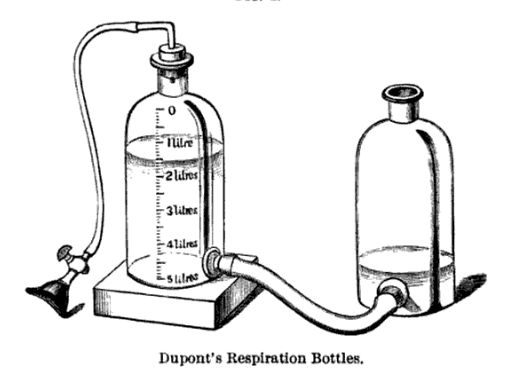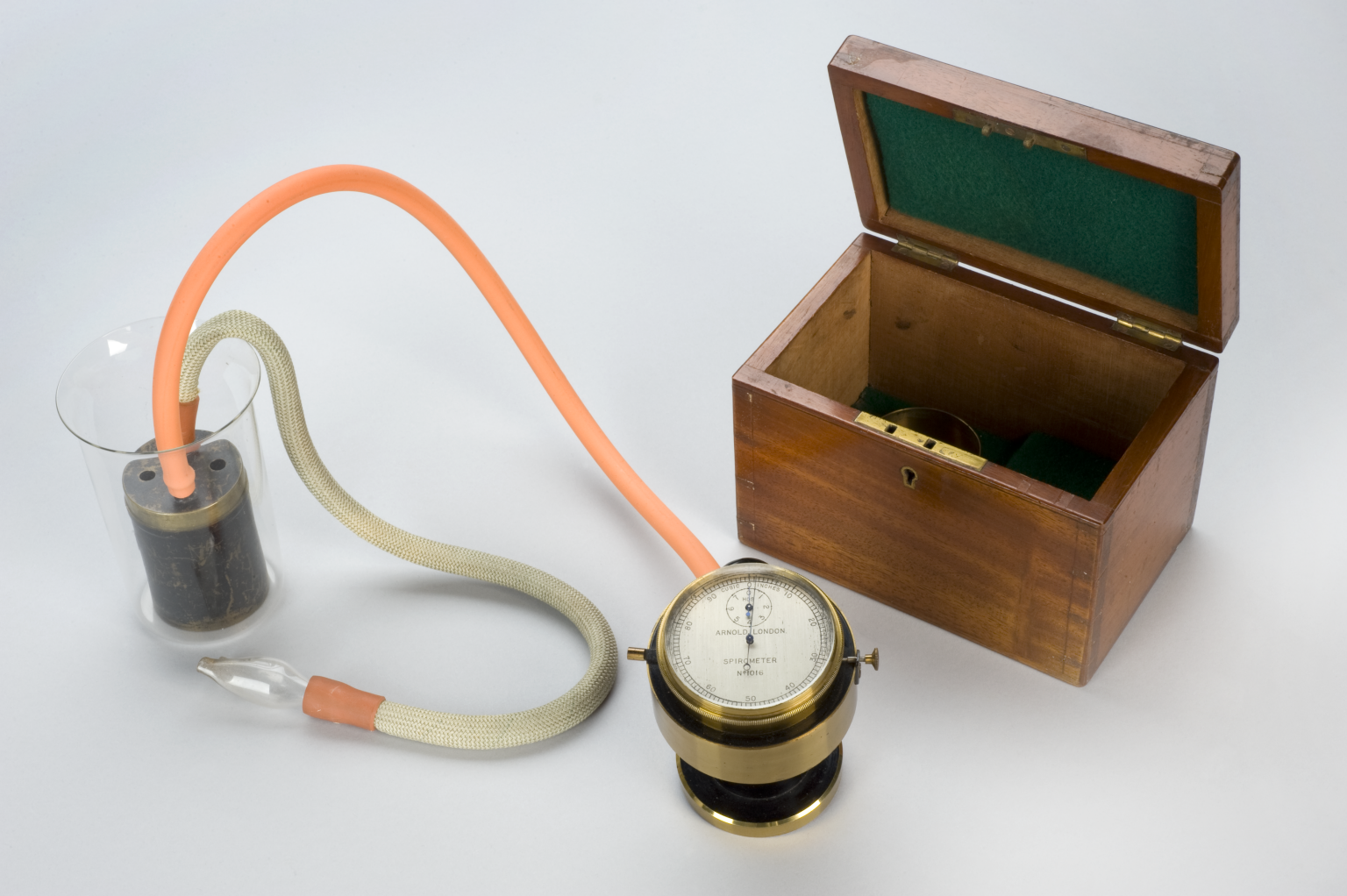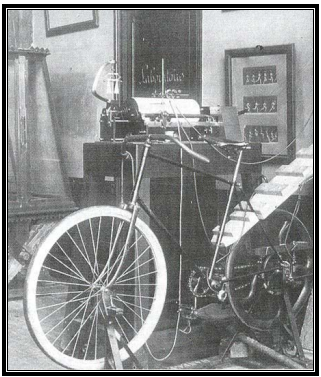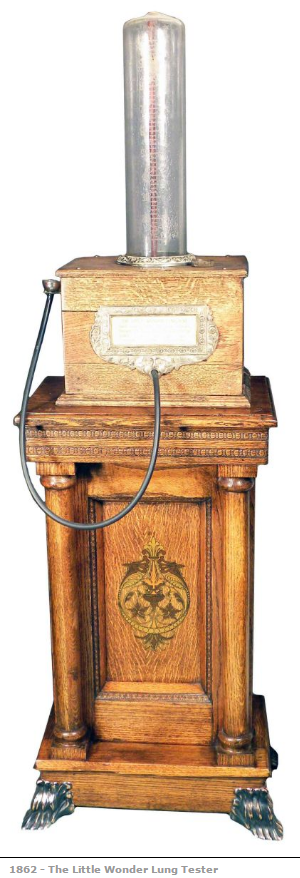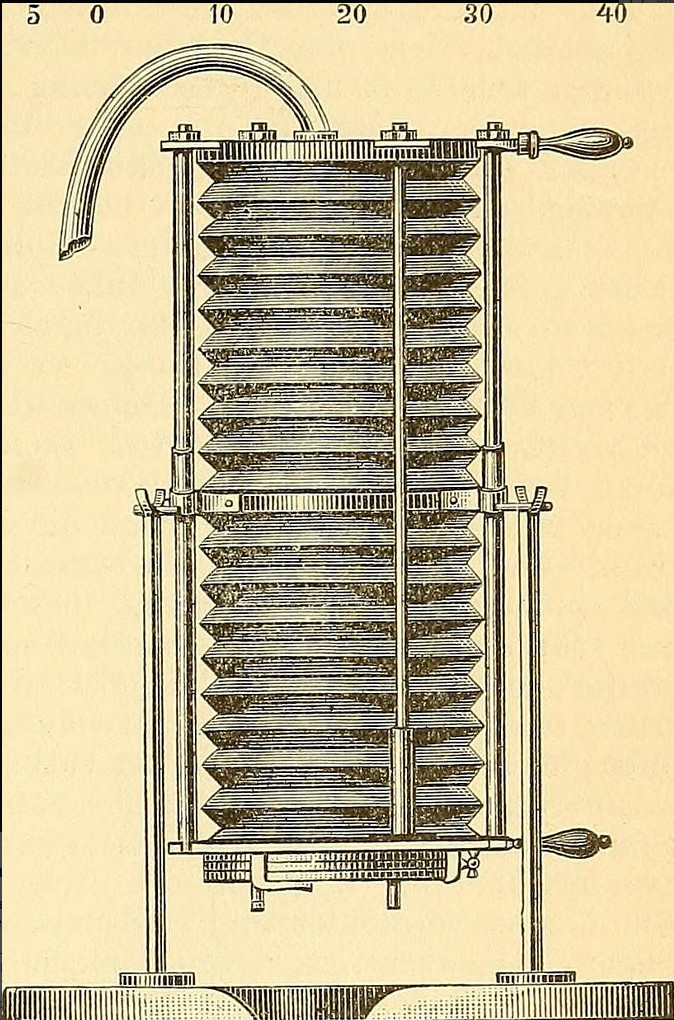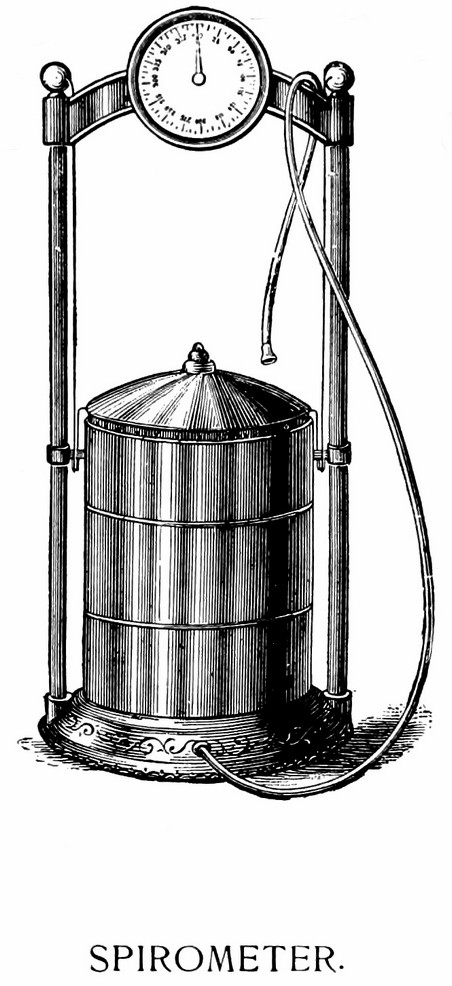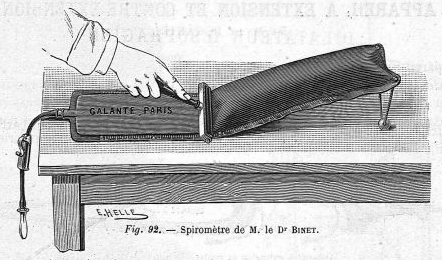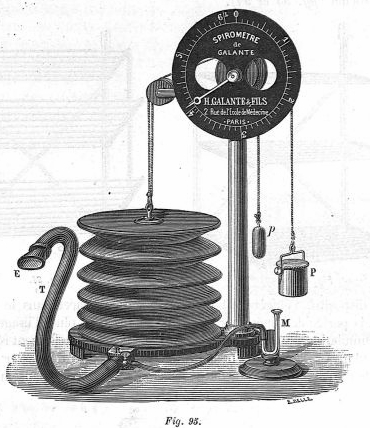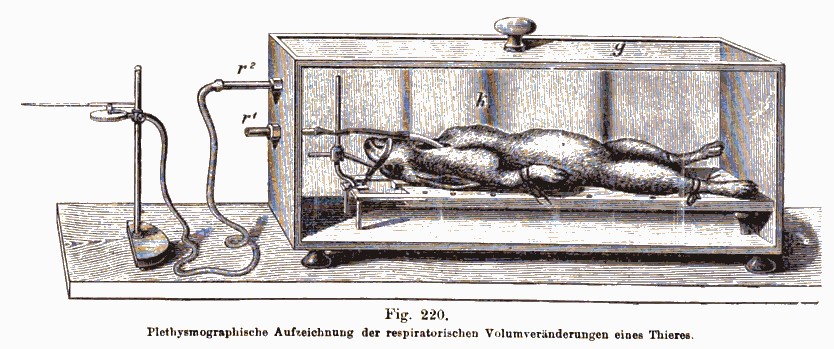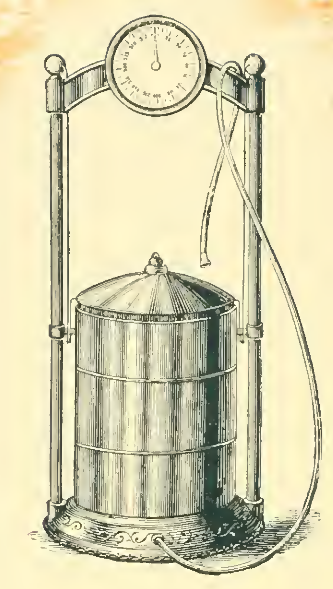
From the Spalding Gymnasium Equipment Catalog, 1891, page 94. A description of its use:
Position – Face spirometer, head up, shoulders well back.
Motion – Take deep breath, place tube in mouth and blow steadily, but neither quick nor slow.
The deep inspiration exercise the inspiratory muscles and especially the diaphragm, while the expiration cause a strong contraction of the muscles of expiration. A truly fine respiratory exercise, and more valuable than is generally supposed.
Made of brass throughout, handsomely nickel-plated. Easily repaired, as the stringing is done on the outside.
Price . . . $30.00
